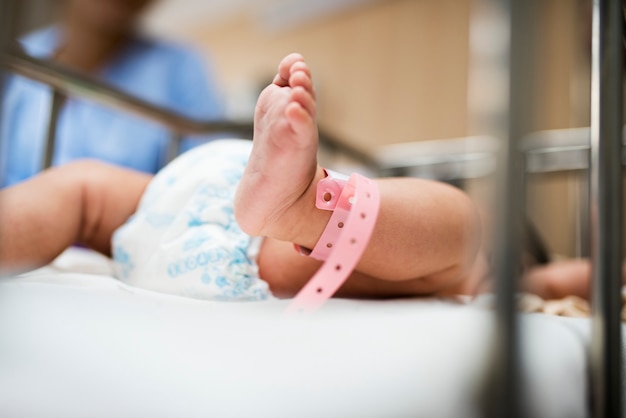
Neonatal Jaundice, a yellowing of the skin and eyes in newborns, happens due to high levels of bilirubin in the blood, a condition also known as hyperbilirubinemia. This is pretty common and usually goes away on its own. About half of full-term babies and 80% of premature babies get jaundice in their first week of life.
**What is Bilirubin?**
Bilirubin is a yellow substance made when red blood cells break down in the liver. It’s then passed out of the body in stool. Babies before birth need a lot of red blood cells to get oxygen from their mother’s blood. After birth, they don’t need as many, so these extra cells break down, creating lots of bilirubin. If the body doesn’t get rid of it, bilirubin gets reabsorbed into the blood, which can be dangerous if it reaches certain organs. In the first few days, babies pass bilirubin in their stool, which is dark green and sticky.
**Why is Jaundice so Common in Newborns?**
Newborns often have high bilirubin levels for two reasons:
1. They have extra red blood cells at birth which break down after birth.
2. Their livers are still immature and can’t process bilirubin quickly enough.
Together, these lead to a build-up of bilirubin, causing the yellow coloring. Increasing a newborn’s bowel movements can help excrete the excess bilirubin.
**Symptoms**
The main symptom is a yellowing of the skin and the whites of the eyes, starting from the head and moving down the body. Mild jaundice affects the face, while severe jaundice can turn the whole body yellow.
**Diagnosis**
Doctors usually diagnose jaundice by checking the yellowing of the baby’s skin and eyes and by measuring bilirubin levels in the blood.
**Treatment**
Most of the time, no treatment is needed, and jaundice clears up within 2-3 weeks. However, it’s important to monitor newborns for symptoms and blood bilirubin levels. Early and frequent feeding, at least eight times a day, helps because it promotes more bowel movements to expel bilirubin.
Colostrum, the first milk produced, is especially helpful as it acts like a laxative for the baby. If bilirubin levels are very high (15 mg/dl or more), phototherapy might be needed. This involves placing the baby under special fluorescent lights that change bilirubin into a form that’s easier to eliminate. The baby is placed in an incubator during this treatment, wearing only a diaper and eye protection.
Bililubin levels are checked at least once or twice a day during this treatment. As the levels drop, they usually continue to decline steadily until they reach normal levels.
**Prognosis**
For most babies, jaundice goes away on its own as their bodies get better at processing bilirubin. However, if bilirubin levels get too high, it can cause serious issues like kernicterus, a rare but severe brain condition. Frequent monitoring, early diagnosis, and treatment can prevent such complications.